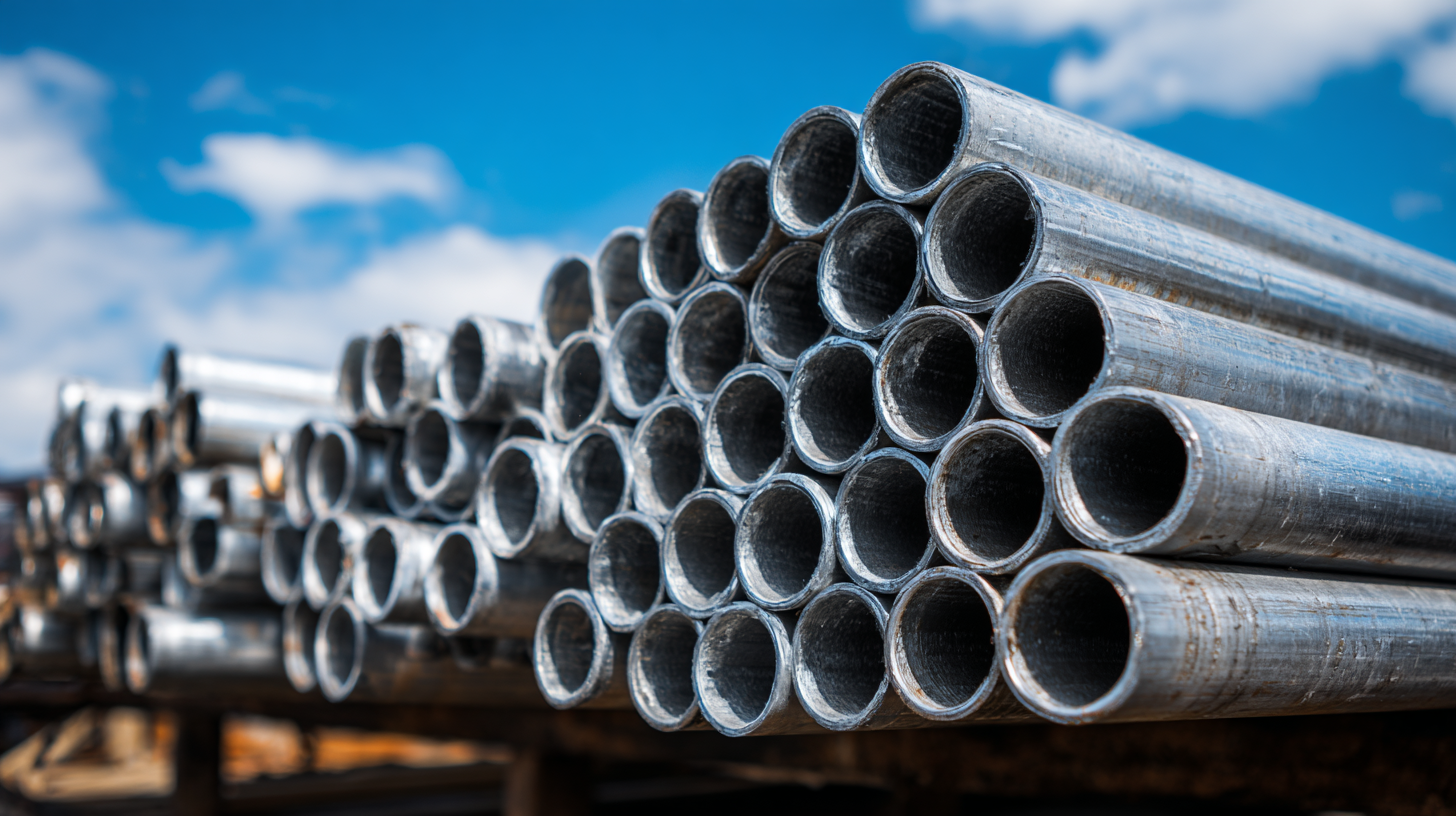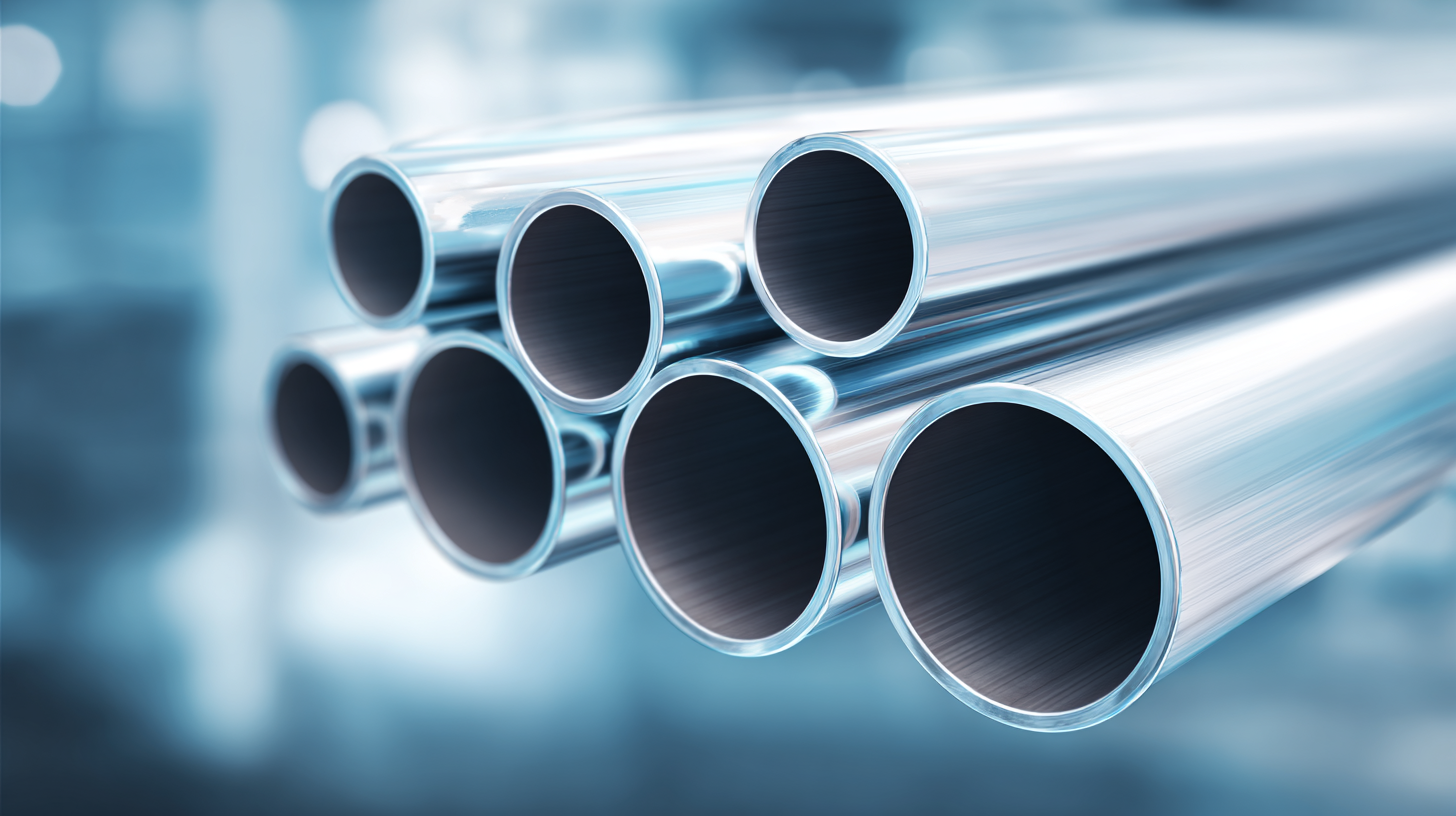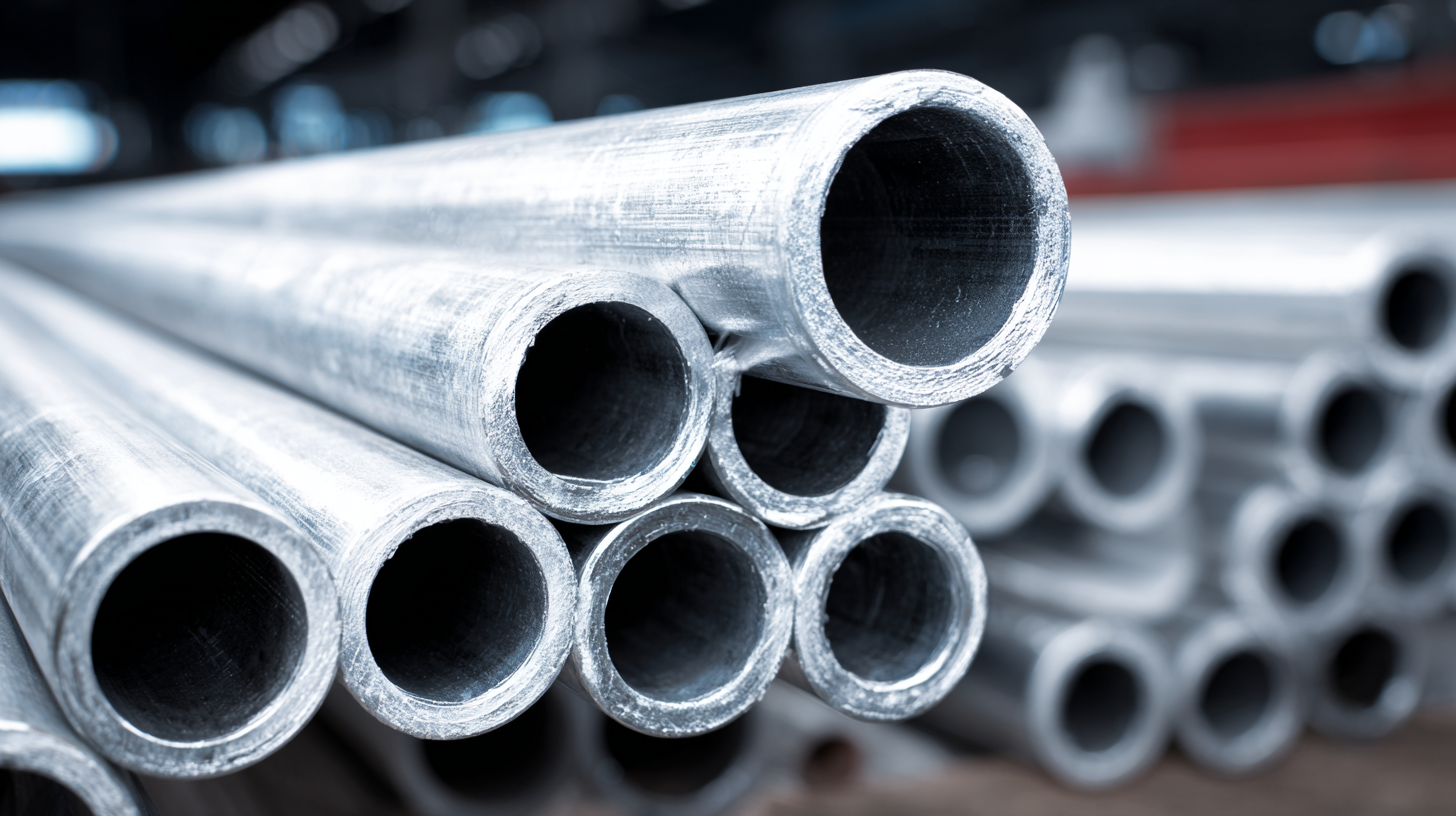In the ever-evolving construction industry, the demand for innovative materials that enhance safety, efficiency, and sustainability is paramount. Among these materials, the Aluminium Scaffold Tube has emerged as a transformative solution, offering unmatched advantages over traditional alternatives. According to a report by Research and Markets, the global scaffolding market is projected to reach USD 7.2 billion by 2025, driven by the increasing need for reliable support systems in urban infrastructure projects. Notably, aluminium's lightweight nature—up to 50% lighter than steel—coupled with its corrosion resistance, significantly reduces labor costs and boosts productivity on construction sites.

This blog explores seven innovative benefits of using the best Aluminium Scaffold Tube, highlighting how its superior properties not only streamline construction processes but also promote a safer working environment, catering to the growing global demand for high-quality construction solutions crafted from China's advanced manufacturing capabilities.
Aluminium scaffold tubes have emerged as a game-changer in the construction industry, providing innovative lightweight solutions that enhance both safety and efficiency on job sites. Unlike traditional steel scaffolding, aluminium is significantly lighter, making it easier to transport, assemble, and dismantle. This reduction in weight not only speeds up the construction process but also minimizes the risk of injuries related to handling heavy materials. Workers can install and adjust these tubes with less physical strain, promoting a safer working environment.
Moreover, the durability and corrosion resistance of aluminium scaffold tubes ensure long-lasting performance even in challenging conditions. This innovative material can withstand the rigors of construction work without compromising structural integrity. With their high strength-to-weight ratio, aluminium tubes support heavy loads while remaining manageable for crews. This balance contributes not only to the efficiency of construction projects but also to the overall quality and safety of the structures being built. By embracing aluminium scaffold tubes, construction companies can reap the benefits of modern engineering while fostering a safer and more productive work atmosphere.
Aluminium scaffolding has emerged as a crucial element in enhancing safety measures within construction sites. One of the key benefits of using aluminium scaffold tubes is their lightweight nature, which allows for easier handling and reduced risk of strain or injury among workers. This agility enables swift setup and adjustments, minimizing downtime and ensuring that safety protocols can be adhered to more efficiently. Furthermore, the sturdiness of aluminium provides reliable support, reducing the likelihood of accidents caused by structural failures.
In addition, the integration of advanced safety interventions—derived from systematic reviews of workplace accident prevention—highlights the significance of using high-quality materials like aluminium. These interventions emphasize the importance of proper training and the use of robust scaffolding systems to create a safer work environment. By opting for aluminium scaffolding, construction firms can significantly lower the incidence of workplace hazards, leading to a more secure and productive site overall. Adopting such innovative practices not only protects workers but also contributes to the successful completion of projects without delays caused by accidents.

Aluminium scaffold tubes offer significant cost efficiency in construction, providing long-term savings that can benefit project budgets significantly. According to a report from the National Institute for Occupational Safety and Health (NIOSH), the use of lightweight yet durable scaffolding materials like aluminium reduces labor costs and increases worker productivity by up to 30%. This is primarily due to the ease of transport and installation enabled by the lightweight nature of aluminium, which allows teams to set up and dismantle scaffolds faster than traditional materials.
Additionally, a study conducted by the International Journal of Construction Management found that aluminium scaffold tubes exhibit superior durability, with a lifespan extending beyond 20 years with proper maintenance. This longevity reduces the frequency of replacements and repairs, leading to further cost savings over time. The report indicates that companies that invested in aluminium scaffolding systems could achieve up to a 15% reduction in overall project expenses, emphasizing the financial benefits of switching from steel or wood alternatives to more innovative materials. By choosing aluminium, construction projects not only meet safety and compliance standards effectively but also enhance their bottom line.
 Aluminium has emerged as a game-changer in the construction industry, offering significant sustainability benefits that align well with modern environmental goals. One of the most compelling aspects of using aluminium scaffold tubes is their lightweight nature, which translates to lower energy consumption during transport and installation. This reduction in weight not only makes logistics more efficient but also lessens the overall carbon footprint associated with construction projects. When scaffolding materials are easy to handle and transport, it facilitates quicker project timelines, minimizing the time equipment spends on-site and further contributing to sustainability.
Aluminium has emerged as a game-changer in the construction industry, offering significant sustainability benefits that align well with modern environmental goals. One of the most compelling aspects of using aluminium scaffold tubes is their lightweight nature, which translates to lower energy consumption during transport and installation. This reduction in weight not only makes logistics more efficient but also lessens the overall carbon footprint associated with construction projects. When scaffolding materials are easy to handle and transport, it facilitates quicker project timelines, minimizing the time equipment spends on-site and further contributing to sustainability.
Moreover, aluminium is 100% recyclable, meaning that it can be reused indefinitely without losing its quality or structural integrity. This property significantly reduces waste generated at construction sites, as old aluminium structures can be melted down and repurposed, rather than ending up in landfills. The recycling process requires only a fraction of the energy needed to produce new aluminium, further enhancing its environmental credentials. By choosing aluminium scaffold tubes, construction companies not only adhere to sustainable practices but also promote a circular economy, which is essential for preserving natural resources and reducing environmental degradation.
Aluminium scaffold tubes have emerged as a versatile solution in the construction industry, adapted to various project needs thanks to their lightweight and durable nature. One of the standout features of these tubes is their ability to support a wide range of constructions, from residential buildings to large commercial projects. Their modular design allows for easy assembly and disassembly, enabling construction teams to modify scaffolding layouts quickly based on project specifications or site conditions.
Moreover, aluminium scaffold tubes excel in environments where traditional materials may fall short. Their corrosion-resistant properties make them ideal for use in coastal areas or industrial settings where exposure to moisture and chemicals is a concern. This adaptability not only ensures safety for workers but also enhances longevity and reduces maintenance costs. As construction projects continue to evolve, the capacity of aluminium scaffold tubes to meet diverse needs will undoubtedly make them a preferred choice for contractors aiming for efficiency and reliability.
| Benefit | Description | Application Area | Adaptability |
|---|---|---|---|
| Lightweight | Easy to transport and handle, reducing labor costs. | Residential Builing | Easily moved to different locations on-site. |
| Corrosion Resistance | Long-lasting and requires less maintenance. | Coastal Construction | Ideal for projects in humid or saline environments. |
| Recyclability | Environmentally friendly and sustainable choice. | Green Building Projects | Easily integrated into sustainable practices. |
| Flexibility | Can be used in various configurations for different needs. | Industrial Sites | Adaptable for multiple scaffolding designs. |
| Cost-Effectiveness | Lower upfront and operational costs. | Utility Installation | Reduces overall project expenses. |
| Safety | High strength-to-weight ratio ensures stability. | High-Rise Projects | Can be tailored for enhanced safety features. |
| Aesthetics | Sleek finish that looks professional on-site. | Commercial Projects | Enhances overall appearance of the worksite. |
